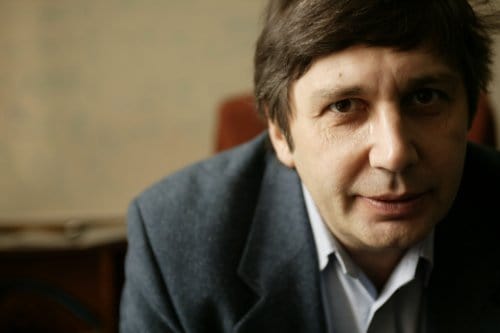
Andre Geim and Kostya Novoselov of the University of Manchester in the UK have been awarded this year’s Europhysics Prize for “discovering and isolating a single free-standing atomic layer of carbon (graphene) and elucidating its remarkable electronic properties”. The annual award is given by the European Physical Society’s condensed-matter division and the pair will share €10,000 in prize money.
The two researchers discovered graphene in 2004 by using a piece of adhesive tape to peel a single atomic layer off a piece of graphite — a process known as micromechanical cleavage or the “Scotch tape method”.
The pair then worked out how to make field-effect transistors using the material and discovered that electrons in the device were able to travel ballistically — that is, without being scattered — from the source to the drain electrode at room temperature.
As famous as silicon
In ten years time I believe the word graphene will be as widely known to the public as silicon Andre Geim, University of Manchester
In principle, ballistic transistors could operate much faster than conventional devices made of silicon and this discover led to a flurry of research into the electronic properties of graphene that shows no signs of abating.
Accepting the award in Rome last week, Geim said “In ten years time I believe the word graphene will be as widely known to the public as silicon”.
In 2005, Geim and Novoselov showed that the electrons in graphene behave like relativistic particles called “Dirac fermions” that have no rest mass. The pair also observed a new “half-integer” quantum Hall effect in the material.
More recently, Geim and Novoselov have shown that graphene has the ideal optical properties to form the transparent electrodes in liquid crystal displays (LCDs); fabricated tiny quantum dots from graphene ; and developed a new way of manufacturing sizable quantities of graphene.
The discovery of graphene triggered a surge of interest in this “wonder material”. Other researchers, for example, have found that graphene not only conducts heat very well but is also the “strongest material in the world”.
Novoselov was born in the Soviet Union in 1974 and did a PhD at the University of Nijmegen in the Netherlands before joining the University of Manchester in 2001, where he is Leverhulme Research Fellow.
Born in the Soviet Union in 1958, Geim did a PhD at the Institute of Solid State Physics in Chernogolovka, Russia. He was associate professor at the University of Nijmegen in the Netherlands before joining the University of Manchester in 2001, where he is director of the Centre for Mesoscience and Nanotechnology.
IgNobel for ‘flying frog’
Geim is also famous for his 1997 “flying frog ” experiment in which he and his colleagues in Nijmegen levitated a frog using a powerful magnet. He shared the 2000 “IgNobel” prize for his efforts.




